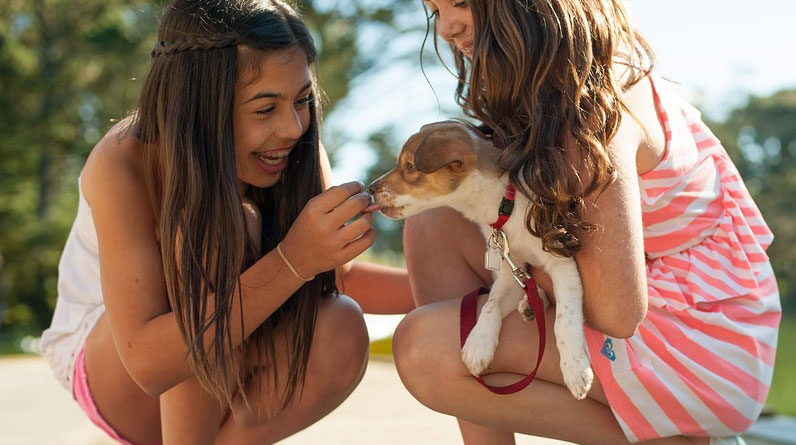
How to Clicker-Train Your Puppy
Clicker training is an increasingly popular technique for training dogs, but it’s not the only method available. Let’s take a look at some of the pros and cons of this approach to dog training, along with some practical pointers about how to get started with a clicker and your puppy.
If you have ever seen a television show that involves animal trainers, there is a good chance you have heard them use the word ‘clicker’. This isn’t just someone clicking their fingers, but rather a sound-based marker signal that has been in use for many years by animal trainers to help animals learn faster and remember new tricks more effectively.
Clicker training has become so popular among pet owners because it is such an effective and fun way to train your dog. It can also be used alongside other methods of training such as reward-based or force-free techniques…
What is Clicker Training?
A clicker is a small handheld device that makes a clicking sound when pressed. It’s similar to the sound of clicking a pen, only louder. The click is used as a marker signal in training because it is consistent and recognizable to animals, and can be applied at any time.
When you use a clicker to train your dog, you pair the sound of the click with something your dog finds rewarding. This is something your dog really loves to do, such as playing with a toy, getting treats, or going on a walk.
When your dog does the thing you want, such as sitting on command, you press the clicker once, followed by a treat or reward. After several repetitions, your dog will associate the click sound with the reward and do the thing you want more often.
The Basics of Clicker Training
When you’re first learning how to use a clicker, the most important thing is to understand that the clicker is used to mark the behavior you want your dog to do. The clicker is not used to indicate a food reward. If you give your dog a treat after clicking, they will not understand why they are being rewarded unless you’re also saying something.
There are several ways you can use a clicker with your puppy to train them. One of the most common is to pair the click with a verbal command.
You might want to get your dog to sit down, so when you see them start to sit down on their own, you click the clicker and say, “Sit.” As your dog continues to sit after hearing the click and seeing you use the signal, they will begin to associate the sound with the behavior, which will make it easier for you to get your puppy to sit on command in the future.
A Few Common Ways to Use a Clicker With Your Puppy
There are many ways to use a clicker with your puppy to help them learn new tricks or improve their behaviors. In all cases, a clicker should be used as a marker signal to let your dog know when they have done something right. Here are some ways you can use a clicker with your puppy.
Your puppy has learned to sit on command and earned the click and treat several times. Now, when they sit, you can click the clicker and use the word “sit” at the same time. Your dog may not understand that they did something right, but after a few times, they will start to associate the sound with the action they took.
Your puppy is getting better at staying in a sitting position when you’re holding a stay command. Now, when your pup holds the position for the length of time you want them to sit, you can click and say, “Stay.” Your puppy may not know what they did to earn the click or treat at first, but after several times your dog will start to understand that staying in the spot when you tell them to will earn them a click and treat.
Pros and Cons of Clicker Training
There are many pros and cons of clicker training, so let’s take a look at each one. First, this training method is quick, easy and fun. Dogs enjoy the process and will be eager to learn new things while they’re having fun.
Using a clicker is also an effective way to teach your dog new things, which is why it’s so popular among pet owners. It’s easy to use a clicker to train your dog to perform new tricks, learn new skills or fix bad behaviors. This is because you can use the clicker to mark the exact moment your dog has done something right, which makes it easier to identify and correct mistakes.
The clicker is also a helpful training tool for puppies. Puppies, especially those under 16 weeks of age, can sometimes struggle to understand verbal commands, especially when they’re overwhelmed with new experiences.
How to Get Started With a Clicker and Your Puppy
To get started with a clicker and your puppy, you first need to select the best clicker for your pup. There are many different types of clickers available, including ones made from different materials, different colors, and different shapes.
You can even find clickers that are covered in fur. When choosing the best clicker for your puppy, make sure the clicker is the right size for your animal. You don’t want to choose a clicker that is too big and may pose a choking hazard for your puppy.
You also need to make sure that your clicker produces a sound your dog can hear. Now that you have a clicker, you can start teaching your dog new tricks and helping them learn better behavior. You can also use the clicker to help your puppy understand verbal commands, like come, sit and stay.
Conclusion
Clicker training is an effective way to help your puppy learn new tricks and improve behaviors. This training method is easy, fun, and quick, and it also allows you to mark the exact moment your puppy has done something right.
There are many pros and cons of clicker training. It’s quick, easy, and fun, and dogs enjoy the process because they’re having fun while they’re learning. The clicker is also an effective way to correct bad behaviors, mark good behavior, and help puppies learn new skills.
That being said, clicker training isn’t always the best method for training all dogs. If you have an aggressive or easily distracted pooch, you may want to try another training method that doesn’t require you to use food rewards.



